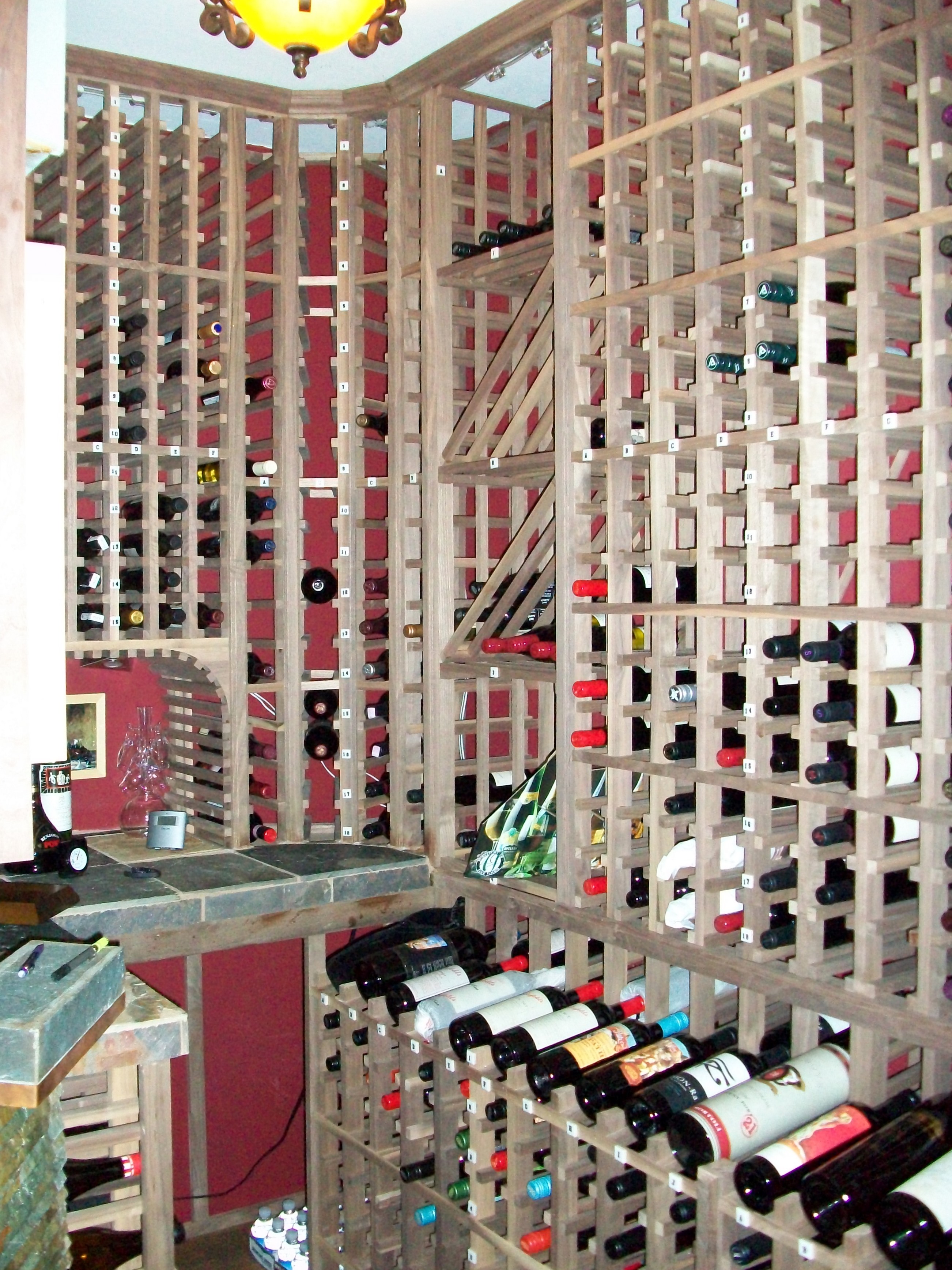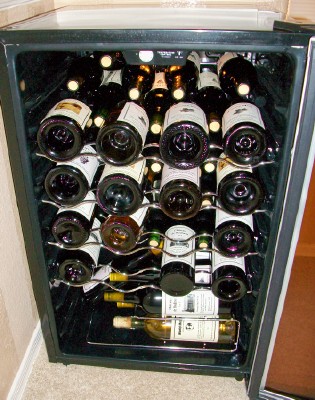Cellaring Wine
In
the U.S. the average time between the purchase and
consumption of wine is only about four hours. Since you're reading
this magazine,
you
probably like stocking up on good vintages or you may be trying to
build a
collection of your favorite wines. Maybe though, you're among the
increasing number of hobbyists who make their own wine. Regardless of your reasons, cellaring wine in a hot climate presents some challenges. Room temperature in most homes in Arizona is around 78░ F - too warm for long term storage. Wines with a lot of tannin, sugar, acid or alcohol (the primary preservatives in wine) may hold up well for a few years, but lighter wines (whites, rosÚ's, and nouveau style wines) may become noticeably off in as little as six months. As wines age, a number of different processes occur; tannins bind with other molecules and precipitate out of solution, color changes, acid reacts with alcohol to form esters, etc. Combined, these processes radically change the character of a wine over it's life. The most important consideration is temperature. Generally, 50 to 60░ F is recommended, with whites and sparkling wines being kept at the lower end of that spectrum and reds at the higher end. Fluctuations in temperature should be avoided since they can compromise the cork by way of expansion and contraction of the wine. Humidity is likely the second most important consideration. 55 to 75% is considered perfect. Any higher than this and mold may develop on labels and cork; lower than this corks can dry out. With our early summer humidity levels hovering around 5%, you may think that achieving 55% would be a problem. In fact, in most homes, humidity levels stay at a reasonably constant 30 to 35%. If necessary, humidity in a cellar may be increased by adding a small water fountain or a container of water. Light should not be overlooked either. Anyone who enjoys wine and has a collection will want to be able to see it, but direct sunlight or even a bright artificial light can bleach color. Tinted glass doors and the lack of a persistent light source are both important features for any cellar. Finally, vibration may be a consideration. The concern is that vibration may "unsettle" the wine and interfere with proper aging. The impact of vibration is open for debate however. Even though we normally think of a cellar as a below-grade room, it may be above grade or just be a cabinet or a cooler of some type. If you are among the lucky few in the southwest with a basement then you have the perfect spot to build out a cellar. If you don't, you still have a number of options. Although generally prohibitively expensive, it may be possible to excavate for a below-grade cellar. Several large and elaborate cellars have been built in recent years at private residences in Arizona and southern California which lacked a basement. These below-grade cellars still require supplemental cooling. Most of us must consider other options. An unused closet, pantry, or room could be converted into a cellar. Fred and Patricia Kagie of Gilbert did exactly that. Their home has a two story ceiling over their first floor dining room. They took half of an overlooking loft space, walled it in, and converted it into a wine cellar. If a major home remodel is not in your future, there are a number of wine cabinets made by Sub-Zero, Vinotemp, Le Cache, and others. These come in a wide range of sizes and there is a correlation between capacity and cost, but you can expect to pay between $1,500 and $4,000 for most models. Capacities generally range from 150 to 800 bottles. If you are considering a high-end cabinet, do your research as these cabinets aren't entirely free from faults. Not ready to spend several thousand dollars on a wine cooler? There are other options. You could get an inexpensive cooler at your local home center, or simply use a refrigerator. Set to the highest temperature, many refrigerators maintain a nearly perfect 60░ F. The small wine coolers sold at most home centers usually accommodate 42 to 52 bottles. Craig's List and Goodwill are good alternatative sources for these inexpensive coolers. While those in the wine trade will often tout the benefits of the more expensive coolers, they will sometimes admit that at home they have an inexpensive unit. The high end units do have some advantages, but not only to they cost a great deal up front, should they ever fail they are expensive to repair. No matter your circumstances, there's no excuse for not having a wine cellar in your home. Photo notes: I'm not convinced of the need for captions with any of these. I leave that at your discretion. The middle two photos are courtesy of Ken Rodenberg. I have an email from him permitting the use of these photos without compensation.  Unused floor space can be converted to a cellar. Many high end cabinets hold 500 or more bottles. (Courtesy of Ken Rodenberg) Courtesy of Ken Rodenberg  Inexpensive cabinets do a fine job without the investment. |